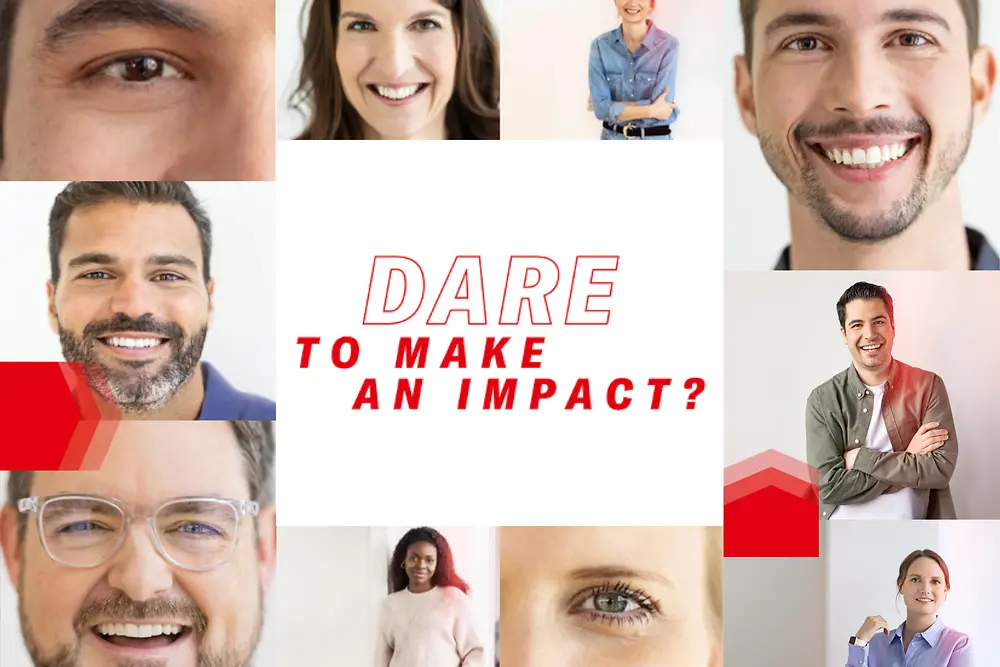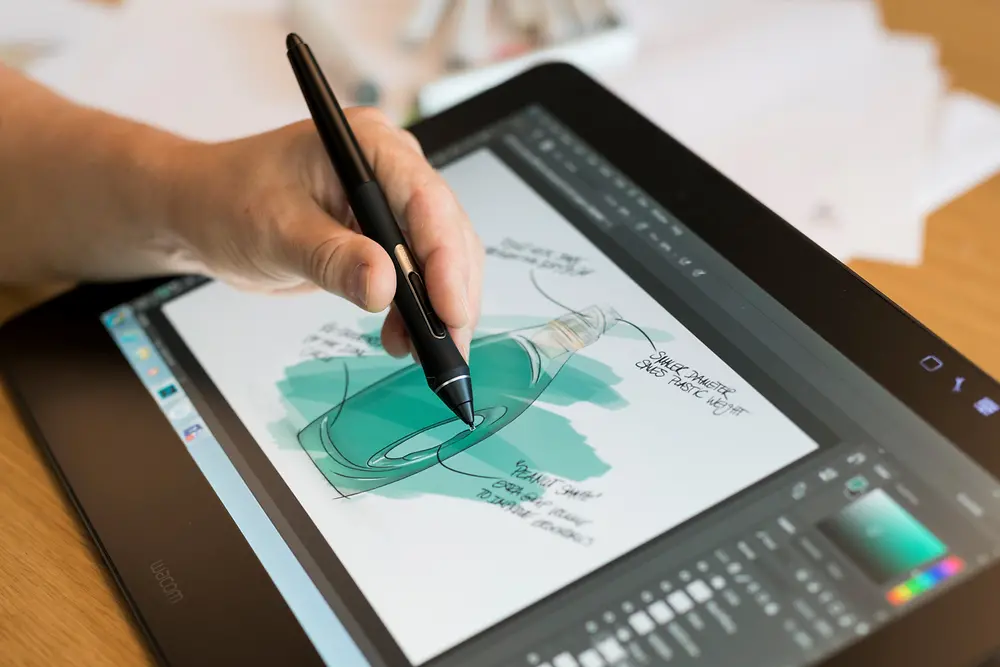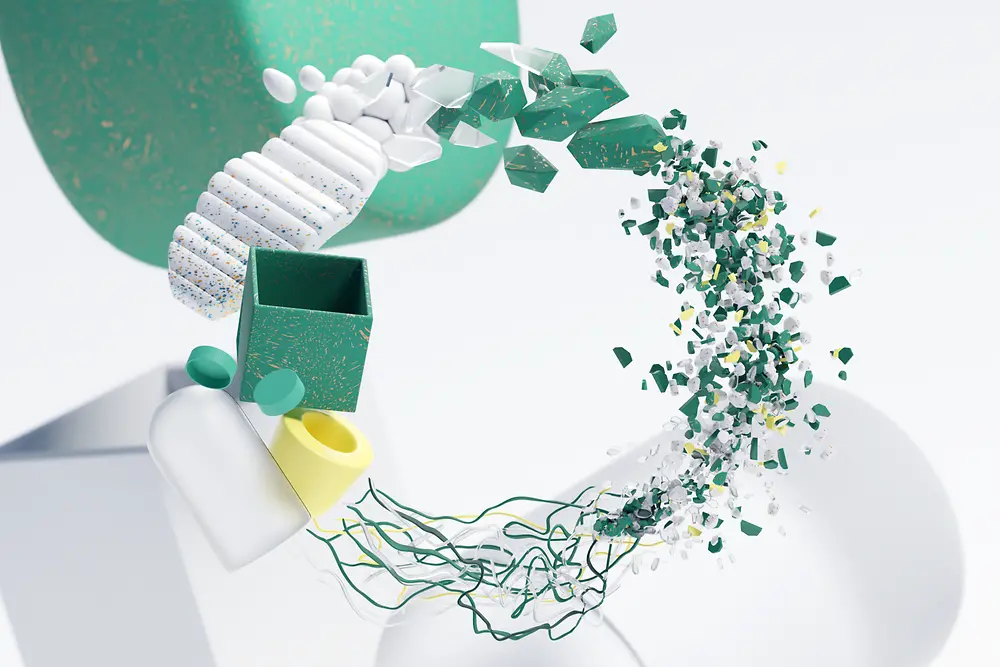Discover the brands and technologies from our business units Henkel Adhesive Technologies and Henkel Consumer Brands.
What does the ideal sustainable packaging look like?
Editor’s Note: This article was updated on April 8th, 2021.
The ideal sustainable packaging is of course no packaging at all. Bananas and cucumbers are good examples. However, packaging is essential for many other products: to transport, store and use them. Packaging also impacts the products’ shelf life. Fresh groceries like dairy products or meat last 10 to 25 days longer when packaged than unpackaged, as Dr. Christoph Hoffmann, Director Corporate Strategy, Sustainability & Circular Economy at ALPLA, points out in his guest article. This prevents groceries from spoiling prematurely and food waste. Different products need different packaging. Dr. Markus Hiebel, Head of Department Sustainability and Participation at the Fraunhofer Institute for Environmental, Safety, and Energy Technology, explains what sustainable packaging looks like.
Dr. Hiebel, could you describe the perfect sustainable packaging in five keywords?
Resource efficient, recyclable, made from recycled materials, uncomplicated, good for the environment.
Which resources should this packaging come from?
The perfect packaging should consist of recycled material or, depending on the situation, renewable resources.
Can sustainable packaging fulfill all of the requirements that industries place on packaging? Are there areas that should be crossed off?
There are specific benefits that packaging has to offer, for example, in order to keep groceries fresh. With other qualities, like transparency or the color of the packaging, some limitations could be made. However, there is also a need to discuss how consumers will react to these changes. In addition, we would have to restructure the production process, and this can have impacts on investment decisions and costs.
Which challenges do we face, when using recycled materials?
The challenges of using recycled materials lie in the small amount and the need for an appropriate quality of the quantities required. In addition, the industrial process must be adapted to the recycled materials and it must be discussed which requirements are absolutely necessary and which could be left out or changed.
Why is it so hard for many companies to use 100 percent recycled material?
The above-mentioned reasons play an important role. One other challenge is that in comparison to recycled material, the prices of primary plastic from fossil fuels are often cheaper.
In your opinion, how long will it take for companies to switch to using 100 percent recycled material?
Already, there are voluntary self-commitments from companies and requirements of the European Union to use recycled material. For example, as of 2025, PET bottles must use at least 25 percent recycled material. A total switch to 100 percent recycled material seems hardly feasible because some of the materials in the cycle are discarded due to the loss of quality, among other reasons. Nevertheless, we should try to make the amount of used recycled plastic as high as possible.
Banana leaves, algae and milk proteins – which natural packaging alternatives do you think are realistic for the future?
That depends very strongly on the application. Locally, banana leaves could pack groceries. At the moment, there is a lot of research on macroalgae, which would be biodegradable and even edible. But there are still difficulties because of its high water content and shelf life. In principle, the barrier function is an important indicator that among other things, influences the shelf life of food.
Dr. Markus Hiebel, Head of Department Sustainability and Participation at the Fraunhofer Institute for Environmental, Safety, and Energy Technology (UMSICHT)
How does the evaluation tool developed by Henkel for recyclable packaging tie into the packaging development process?
Through the tool, packaging developers directly receive a response regarding the recyclability of different packaging variants. For example, should the material range and combinations change, the tool would show which impacts these decisions have. That way, during the early stages of the development process, appropriate decisions could be played out and later made.
Fraunhofer UMSICHT tested the tool’s usefulness, accuracy and logic. How did these variables exactly show themselves?
We fed the tool with different data and saw whether it came up with reliable results. Furthermore, we examined the assumptions and documentation behind the tool, as well as the completeness of the chosen criteria and the accuracy of the evaluation, such as the question how strictly the tool evaluated.
How important is it, in your opinion, to strive for sustainable packaging solutions?
We should work together under high pressure on sustainable solutions – I still see potential in packaging design in particular.









